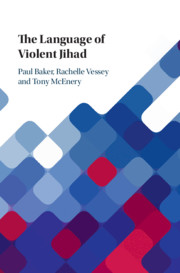Book contents
8 - Conclusion
Published online by Cambridge University Press: 21 October 2021
Summary
In this concluding chapter we begin by reviewing our research questions, first by looking at differences between the Extreme, Fringe and Moderate texts, then by considering the aspects of language use that were frequently used to manipulate readers into accepting the ideology of violent jihad. Following these two sections we consider the implications of our findings for work aimed at creating and disseminating counter-discourses to extremism. We then reflect on the study itself in terms of the limitations and difficulties encountered, and consider how our work could be expanded in the future.
Keywords
- Type
- Chapter
- Information
- The Language of Violent Jihad , pp. 203 - 217Publisher: Cambridge University PressPrint publication year: 2021

